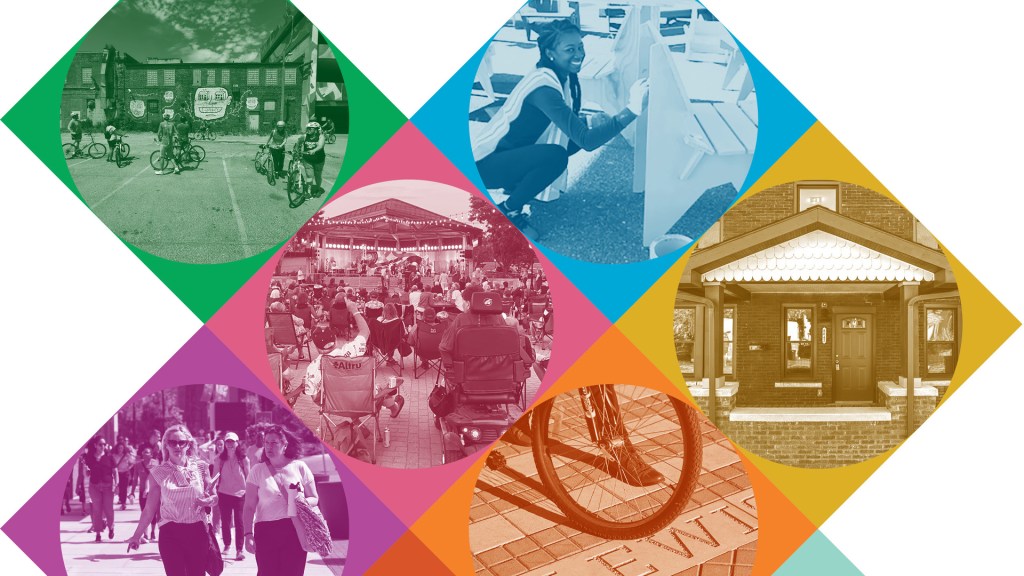
Americans’ Social Networks and Social Media, Not Traditional News Sources, Drive Community Engagement
Data from Gallup and the John S. and James L. Knight Foundation show that Americans generally perceive local news as an information source that positively serves their community (see Part 1). But when it comes to the flow of information citizens use to get directly involved in political activities, local news is eclipsed by social networks (see Part 2). The data further indicate that Americans are turning to different kinds of information sources and using different communication tools to get involved in politics, depending on the issues they care about. These findings are from a Gallup/Knight survey of 4,221 U.S. adults who are members of Gallup’s probability-based national panel, fielded Nov. 23-Dec. 3, 2021.
Gallup/Knight find that four in 10 Americans report having participated in a politically focused group or event, whether in person or online, at some point in their life. Across the 40% of study respondents who report having engaged in some political group or event, the top issues or topics most mentioned are: general political or government-related topics (28%) such as voting, campaigns or fundraising; local political issues (22%) such as rezoning, city council, or local boards or permits; topics related to the Black Lives Matter (BLM) movement or racial identity (17%); and issues regarding women’s rights (11%).1
These Americans who report participating in a political event or group are more likely than Americans overall to feel very or somewhat attached to their local community. This finding is true irrespective of political topic. Those who have participated in an event or group related to local politics are 11 percentage points more likely than the national average to report feeling very or somewhat attached to their local community, and participants in women’s rights groups or events are nine points more likely to feel connected to their local community. Seventy-two percent of those engaged in BLM events feel very or somewhat attached, as do 70% of those who have participated in events related to general politics.
Participation in general or local politics leverages political or community leadership, while participation in Black Lives Matter or women’s rights issues leverages social media.
Overall, most Americans who have participated in political groups or events report first hearing about the opportunity to get involved via social media (34%) or by talking to people they know in their community (20%). Only 8% of Americans report first hearing about the political group or event from local news, and just 3% report hearing about it from national news.
How citizens first hear about political groups or events varies meaningfully by topic. Those who have participated in events about general political/government issues or local-specific political issues report learning about the opportunity for participation mostly from either social media or talking to people they know. However, those who have participated in general political issues report the highest rate of first hearing about the group or event from a local politician or representative (9%). And those who have participated in local politics are more likely to have first heard about the group or event directly from a community leader compared with other issue-based groups. The data suggest that getting involved in topics such as political campaigns or local zoning or school board issues, for example, appears to be more often facilitated by political leaders in the community than for other political issue areas. Americans who have participated in BLM or women’s rights-related groups and events are much more likely than the average across other political topics to have first heard about the opportunity from social media. Among those involved in BLM, 49% first heard about the group or event from social media, as did 44% of those engaged in issues related to women’s rights. This finding fits the general pattern that more women and Black Americans are engaged in these two topics and that women and Black Americans are using a wider variety of social media than other demographic groups.
Similar differences emerge in how the 40% of Americans who have participated in a political group or event attempted to raise further awareness about the issue they care about. Those who have engaged in general politics are most likely to have raised awareness via friends and family (73%) and second highest across the various topics to have turned to neighbors or people in their community (61%). They are also the most likely across political topics to have used mail (such as writing letters or newsletters).
While those engaged in local politics are most likely to say they reached out to friends and family (79%) and neighbors or people in their community (65%) to raise awareness, they are also the most likely among all other political event participants to report turning to local politicians (42%), leaders of local organizations (39%) and local journalists (17%), by anywhere from two to 20 percentage points. They are also the most likely to report using community apps to raise awareness compared with those engaged in other political topic areas. Americans who have participated in events related to BLM and women’s rights similarly list reaching out to friends and family and to neighbors or those in their community as the top people they turned to in order to raise awareness about the issues. Yet, in contrast to other political issues, those involved in BLM report the lowest contact with local politicians (22%) by 10 to 20 percentage points, as well as the lowest level of reaching out to local journalists to raise awareness. Those who have engaged in politics related to women’s rights issues are more likely than those involved in any other policy topic to have reached out to national politicians, by five to 12 points.
Participants of BLM-related political groups or events report the highest use of in-person activities (60%) and social media (55%) and lower use of email, phone and mail to raise awareness. Those engaged in women’s rights topics are more likely than those involved in general or local politics to have used social media to raise awareness.
Evaluations of local news vary by political participation and degree of contact with local journalism.
Americans who have participated in a political group or event report higher levels of feeling connected to their community. And when it comes to their evaluations of who does the “best job” of educating and informing the public, holding leaders and other institutions accountable, and amplifying positive stories or helping to solve problems, these participants more often select community organizations over local news. Those engaged in BLM-related topics rate community organizations over local news as doing the best job when it comes to educating the public (35% for community organizations vs. 29% for local news), amplifying positive stories (36% vs. 28%) and especially holding local leaders accountable (47% vs. 28%).
Those engaged in political groups or events related to women’s rights also rank community organizations as doing the best job over local news in amplifying positive stories (32% vs. 27%) and holding local leaders accountable (39% vs. 28%). And those involved in local politics rank community organizations higher for holding leaders accountable, with 33% reporting they do the best job compared with 26% saying local news does.
It's possible that BLM-related event participants are turning more toward community leadership and organizations because, across all political issue groups, they generally report less contact with local journalism. Specifically, a smaller proportion of BLM participants than participants in other political issue areas report sharing their thoughts with a local news reporter online, calling a local news radio talk show, receiving a response from a reporter regarding a message they sent or meeting someone in their community who works for a local news organization.
Americans who have engaged in BLM or racial justice-related groups or events are slightly less likely to follow local news — 61% report they pay a great deal or moderate amount of attention to local news. Comparatively, 71% of people who have participated in events related to women’s rights or general politics pay a great deal or moderate amount of attention to local news, and 79% of those engaged in local politics are regularly following local news. BLM event participants are also paying less attention to national news compared with participants in other political events, by roughly the same amount.
Implications
Across this multipart series, Gallup and Knight have taken a deeper look at the role local news plays in civic and political engagement in our communities. The data presented here suggest that not just general participation matters in terms of how citizens are communicating opportunities to get involved in their community — so does the specific political topic or issue a citizen is engaged in. Those engaged in topics related to local politics appear to have more contact with local political officials and leaders. Those involved in groups or events related to women’s rights issues are more likely to report reaching out to national politicians than those who have participated in other political topic areas. Citizens engaged in BLM-related political issues are more positive than other groups about the job community organizations are doing at educating, informing and serving as watchdogs in their community. They are also more likely to leverage social media to raise awareness, as are those involved in issues related to women’s rights, compared with people involved in other political topics. Across the board, local journalism ranks low as an information source or means through which to raise awareness.
This new research suggests that while Americans believe local news plays a positive role in our communities, it is not Americans’ main pathway to direct participation in local political issues they care about. And across multiple topic areas, Americans involved in political activities are turning more to community organizations than local news for civic needs.
A Note on Methodology
The 40% of respondents who reported they had participated in an in-person or online political group or event were given the opportunity to write in a text box what political topic or issue that group or event was focused on. The research objective was to look for any differences in contact with local journalism and other information sources across participants engaged in different political topics. Thus, these findings are not a reflection of an overall national percentage of Americans who either support or have participated in events related to various political topics — simply a lens for analysis.
The findings presented in Part 2 of this series showed that Democrats, younger Americans, college graduates and those who live in urban or suburban areas were more likely to have participated in political groups or events overall. The larger coalescing of topics closely related to top Democratic Party initiatives in the top four — combating racial injustice and promoting issues related to women’s rights — may be due to this demographic lean.
The write-in text box responses were analyzed using natural language processing in three steps. In the first step, unsupervised biterm topic models were estimated to give a rough approximation of the topics present in the text data. After a preliminary set of topics was defined, semi-supervised keyword-assisted topic models were estimated. These models identified word associations using seed keywords that, based on the biterm topic models, were of substantive importance, and conceptually relevant. Nine topic categories were identified. In the final step, human coders manually examined the topic categories to contextualize them and to highlight their similarities and differences. For example, of the two political topics, human coders found that the local politics topic category discussed themes such as school boards and zoning, while the general politics topic category discussed themes such as campaigning and fundraising.
The demographic make-up of the most frequently reported topics is as follows:
Examining the 40% of Americans who have participated in some political group or event in their life and comparing them across issues, participating women report being relatively more active in events related to women’s rights and BLM (67% and 61% of those two issue groups are women, respectively) than general politics (51% female) and local politics (48% female). Black Americans who have participated in political groups or events report having engaged in local politics (comprising 17% of this group), followed by BLM at 15%, women’s rights at 11% and general politics at 10%. BLM also had the highest level of Hispanic American event participants (23%) compared with women’s rights (20%), general politics (19%) and local politics (18%). BLM and women’s rights participants were also the youngest, with 55% aged 18 to 34. General and local political issues had higher participation from those aged 35 to 54 and 55 and older.
Regarding political party affiliation, Democrats were mostly involved in BLM (70%), followed by women’s rights (65%), general politics (43%) and local politics (40%). The highest reported Republican representation was within the general political topics category at 26%, compared with local politics at 24%, women’s rights at 11% and BLM at 6%. The highest level of independent representation was local politics at 29%.
[1] These findings are not a reflection of an overall national percentage of Americans who either support or have participated in events related to various political topics. Respondents in this study who had participated in a group or event were simply given an opportunity to list what the political topic or issue was related to that event. Those responses were then used as a lens for analyzing whether people engaged in different political issues were using different sources and tools for communication. See additional details in methodological note.
Recent Content
-
Learning and Impactarticle ·
-
Artsarticle ·
-
Learning and Impactarticle ·

